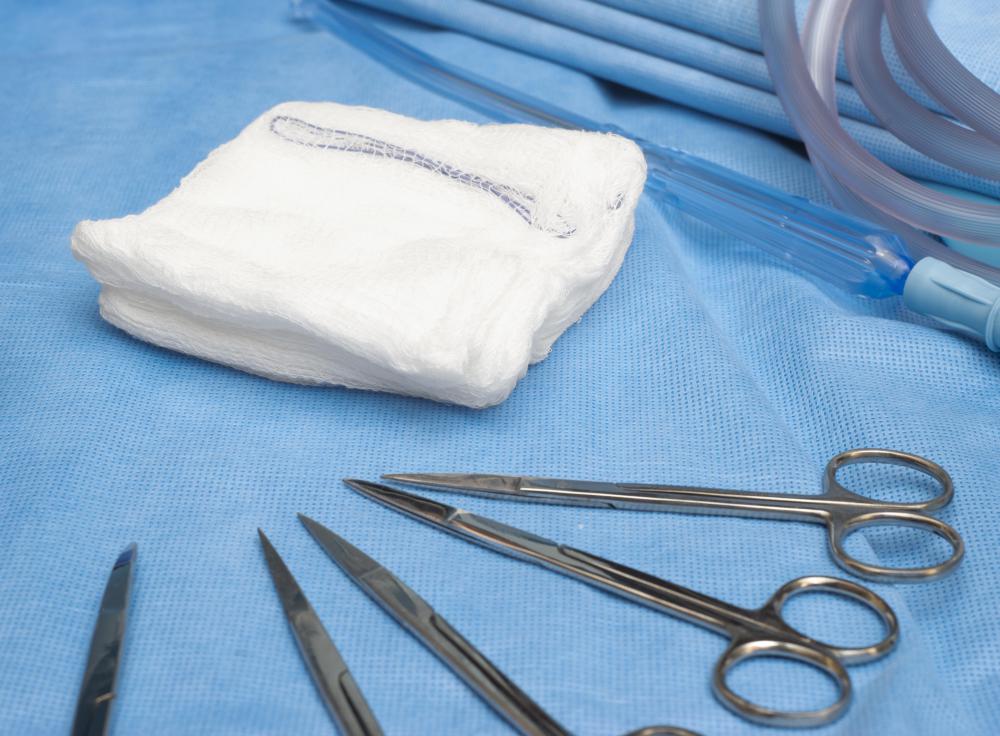At TheHealthBoard, we're committed to delivering accurate, trustworthy information. Our expert-authored content is rigorously fact-checked and sourced from credible authorities. Discover how we uphold the highest standards in providing you with reliable knowledge.
What Is Polymastia?
Polymastia is a condition in which a person has more than two mammary glands, called accessory breasts or supernumerary breasts. It is also sometimes called pleomastia. The form of the additional mammary glands can vary, ranging from relatively undeveloped mammary tissue under the skin that may not even be externally visible to a fully functional additional breast or breasts. The extra breast tissue is usually on the torso, though this is not always the case.
This condition is related to but not identical with the more common condition called polythelia, in which a person has supernumerary nipples. The supernumerary breast of a person with polymastia may or may not have a nipple, while polythelia most commonly refers to extra nipples that are not connected to mammary gland tissue. The medical condition polymastia should not be confused with the sponge genus of the same name, which was named Polymastia because the numerous structures protruding from its surface were thought to resemble nipples and has no relationship to the human medical condition. Polymastia is also sometimes called hypermastia, though hypermastia more typically refers to a condition in which the breasts grow to an abnormally large size.

Supernumerary breasts that develop as a result of polymastia most commonly appear in a region called the milk lines, structures present in all mammals of both sexes. In humans, they are normally invisible and run down both sides of the torso from the armpits down to the groin. This structure is where an organism's nipples and mammary glands start to form while it is still a developing embryo and so is the most common source of supernumerary breasts produced during the embryo's formation, though they can occur virtually anywhere. Cases exist of people with supernumerary breasts on areas of the torso away from the milk lines, such as the back, but they can also appear on a person's limbs or in places such as the buttocks, hip, or neck.
The extent to which the supernumerary breast is developed or is visible is variable, both between different individuals and in the same individual under different conditions. In some cases of polymastia, the supernumerary breast is fully developed, fully visible, and can even lactate like a normal breast. More commonly, it is not developed to that extent and may appear only as a bump under the skin, in which case it is frequently mistaken for a tumor. In many cases, the supernumerary breast tissue goes completely unnoticed until a physiological change affecting the breasts, such as the hormonal shifts women undergo during pregnancy and lactation, causes it to swell in size or become sore.
Polymastia is more common in women than in men, but can occur in both sexes. It is not dangerous in itself, though many people with supernumerary breasts choose to have them surgically removed for reasons of appearance or self-esteem. It is also possible for supernumerary breasts to develop breast cancer in in the same way as a normal breast.
AS FEATURED ON:
AS FEATURED ON:











Discussion Comments
@ysmina-- I know what you mean. I have polymastia too. I actually didn't find out until after I was pregnant because they were not large before then. They just looked like small areas of excess fat, but they hardened due to hormones in pregnancy. I'm now waiting to finish breastfeeding to have them surgically removed. Thankfully, they're not producing milk or anything, so it's basically for appearance reasons that I want them gone.
By the way, people think that polymastia only occurs to women but no, it can happen to men too. There is nothing to be ashamed of, it's just one of those mutations that occur as we are forming and developing in the womb. Thankfully, there is a solution for it.
@bear78-- Yes, "mastia" refers to mammary glands, or breast. That's all that it means. So the prefix it gets in front of it determines the type of issue relating to the breasts. It could be "amastia," the absence of breasts, "gynecomastia," abnormal enlargement of breast, or "polymastia" having multiple breasts.
Polymastia is very rare and not many people know about it. That might be both good and bad because I think people would not take it seriously as a health condition that needs to be treated. I had a friend in high school who had polymastia and she confided in me. She was afraid of people finding out because she knew she would be made fun of. After college, she had the extra breast tissue surgically removed and she is much happier.
I was wondering how this term was familiar to me and I remembered now that I had read about "gynecomastia" which is breast tissue enlargement in males. It often occurs due to hormonal imbalances and can be triggered by steroid use as well. I guess "-mastia" refers to breast tissue here. This is the common root in all of these various medical terms for breast related disorders.
Post your comments